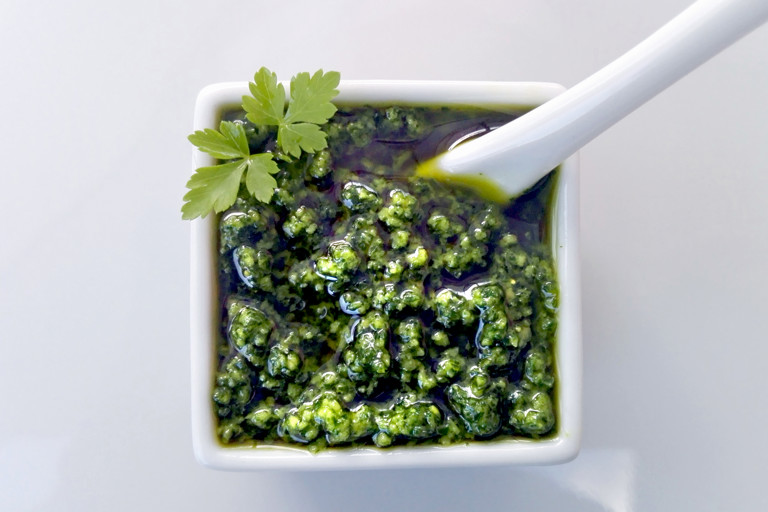Salsa verde
An authentic salsa verde recipe is a must for any cook's repertoire, and Amy Gulick's classic recipe proudly encapsulates all of simple sauce's verdant, punchy goodness. Perhaps the most versatile of all Italian sauces, salsa verde, or 'green sauce' in English, is as good with roasted vegetables or pasta as it is with a hearty bowl of bollito misto.
Super versatile salsa verde or ‘green sauce’ is especially popular in areas of Italy where bollito misto, a stew of boiled meats similar to pot-au-feu, forms part of the traditional culinary context. In Piedmont, where salsa verde typically includes anchovy and capers and goes by the name bagnet vert, bollito is served with a selection of additional sauces, including bagnet ross (made with tomato and red bell pepper), mostarda di frutta, mayonnaise, and more.
To bulk up the sauce and cut its tanginess, breadcrumbs, stale bread soaked in water or vinegar, boiled potato or chopped boiled egg might be added to salsa verde’s basic composition of parsley, garlic, and olive oil. Other versions feature a small amount of fresh basil or rocket, or possibly a fresh red chilli pepper for extra zing.
Salsa verde improves just about anything it touches. Try it on pasta in place of traditional basil pesto, or with roasted vegetables, grilled fish or chicken. It makes a nice dip for breadsticks or crudités, and is very good with boiled eggs. Salsa verde will keep for at least a week if refrigerated in a glass jar and sealed with a layer of olive oil. Always let the sauce warm to room temperature before serving, and dilute with small amounts of olive oil or hot pasta water as needed if the sauce becomes too thick.
Ingredients
Metric
Imperial
Salsa verde
- 2 tbsp of salted capers, heaped, rinsed in cold water
- 2 salted anchovy fillets, rinsed in cold water
- 2 garlic cloves, peeled
- 100g of flat-leaf parsley, fresh
- 1 handful of rocket, or 1 handful of basil leaves
- 70g of extra virgin olive oil
Method
Get in touch
Please sign in or register to send a comment to Great British Chefs.



